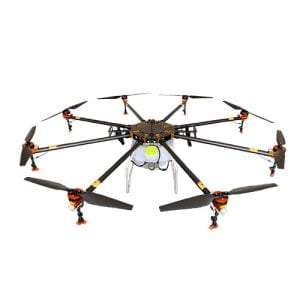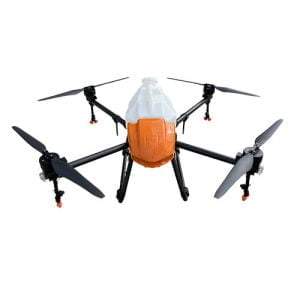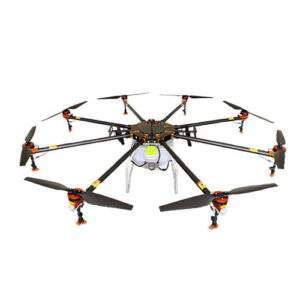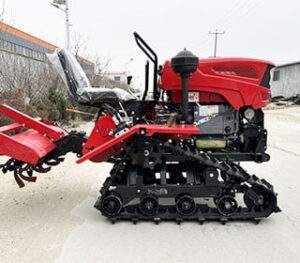Revolutionizing Farming: How Drones in Agriculture Are Reshaping Crop Management
Introduction

In recent years, the integration of drones in agriculture has revolutionized traditional farming practices. These unmanned aerial vehicles (UAVs) equipped with advanced sensors and imaging technologies are offering farmers unprecedented insights into crop health, soil conditions, and overall farm management. This blog explores the transformative impact of drones on agriculture, highlighting their benefits, applications, and future prospects.
The Rise of Drones in Agriculture
The adoption of drones in agriculture has surged due to their versatility and efficiency. From small-scale farms to large agricultural enterprises, these aerial platforms are being deployed for various purposes, including:
- Crop Monitoring: Drones equipped with multispectral and thermal cameras can capture high-resolution images of crops, allowing farmers to assess their health and detect pest infestations or nutrient deficiencies.
- Field Mapping: Using GPS technology, drones can create accurate 3D maps of farmland, enabling farmers to optimize planting patterns, irrigation systems, and drainage networks.
- Precision Spraying: With precision spraying systems, drones can target specific areas of crops with fertilizers, pesticides, or herbicides, reducing chemical usage and minimizing environmental impact.
- Livestock Management: Drones equipped with thermal imaging cameras can monitor livestock health, locate missing animals, and identify potential predators, enhancing overall farm security and efficiency.
- Yield Estimation: By analyzing data collected from drone surveys, farmers can make more accurate predictions about crop yields, enabling better harvest planning and marketing strategies.
Advantages of Drones in Agriculture
The utilization of drones offers numerous advantages over traditional farming methods, including:
- Cost-Effectiveness: Drones help reduce operational costs by optimizing resource allocation, minimizing manual labor, and maximizing crop yields.
- Time Efficiency: With rapid data collection and analysis capabilities, drones enable real-time decision-making, allowing farmers to respond promptly to changing environmental conditions.
- Environmental Sustainability: By enabling targeted interventions, such as precise spraying and irrigation, drones help minimize chemical usage, conserve water resources, and reduce carbon emissions.
- Data-driven Insights: The wealth of data collected by drones provides farmers with valuable insights into crop health, soil fertility, and environmental factors, facilitating informed decision-making and strategic planning.
Here’s a sample table that provides an overview of different types of drones commonly used in agriculture:

| Drone Type | Description | Application |
|---|---|---|
| Fixed-Wing | Aerodynamic design with fixed wings for long-range flights and large area coverage. | Field mapping, crop scouting, aerial surveys. |
| Multirotor | Vertical takeoff and landing (VTOL) with multiple rotors for maneuverability and stability. | Crop monitoring, precision spraying, livestock management. |
| Hybrid | Combination of fixed-wing and multirotor capabilities for versatility in different tasks. | Variable depending on configuration and features. |
Challenges and Future Outlook
Despite their potential, the widespread adoption of drones in agriculture faces several challenges, including regulatory hurdles, limited infrastructure, and data privacy concerns. However, ongoing advancements in drone technology, coupled with supportive government policies and increased industry collaboration, are expected to overcome these barriers.
In conclusion, drones are revolutionizing farming practices by providing farmers with unprecedented insights, efficiency, and sustainability. As technology continues to evolve, drones will play an increasingly vital role in shaping the future of agriculture, ensuring food security, and mitigating the environmental impact of farming operations.
FAQ: Frequently Asked Questions
Q: Are drones in agriculture suitable for all types of farms?
A: While drones offer benefits across various agricultural settings, their suitability depends on factors such as farm size, terrain, and specific needs. Small to medium-scale farms may find drones particularly cost-effective for crop monitoring and management.
Q: How do drones in agriculture navigate and collect data autonomously?
A: Drones utilize GPS, onboard sensors, and advanced algorithms to navigate autonomously and collect data. They can be programmed to follow pre-defined flight paths or operate in response to real-time commands from farmers or agronomists.
Q: What regulations govern the use of drones in agriculture?
A: Regulations vary by country and region, but generally, drone operators must adhere to aviation laws, obtain appropriate certifications or permits, and comply with privacy regulations when collecting data over private property.
Q: Can drones in agriculture replace traditional farming practices entirely?
A: While drones offer significant advantages, they are not intended to replace traditional farming practices entirely. Instead, they complement existing methods by providing farmers with additional tools and insights to enhance productivity and sustainability.
Q: What are the key considerations for farmers looking to adopt drones?
A: Farmers should consider factors such as cost, operational complexity, training requirements, and data management when evaluating the adoption of drones. It’s essential to assess the specific needs and goals of their farm operations before investing in drone technology.
In summary, drones have the potential to revolutionize agriculture by enabling data-driven decision-making, optimizing resource management, and promoting environmental sustainability. As farmers embrace this transformative technology, the future of crop management looks promising, with drones leading the way towards a more efficient and resilient agricultural sector.



